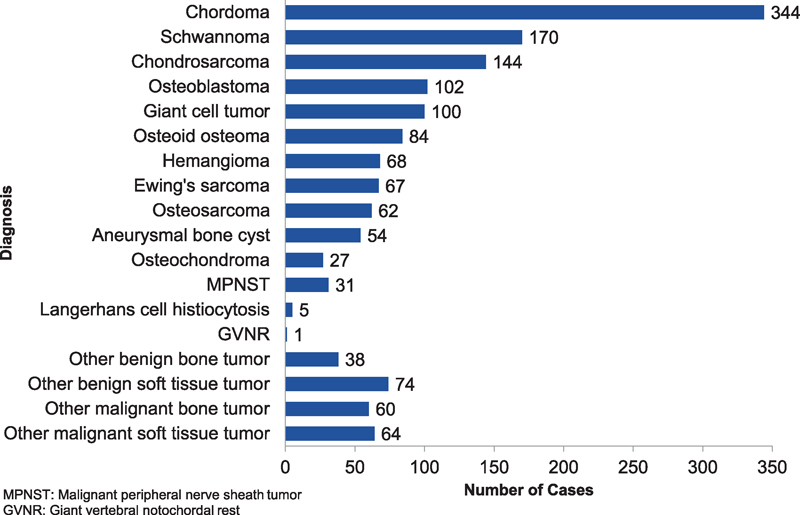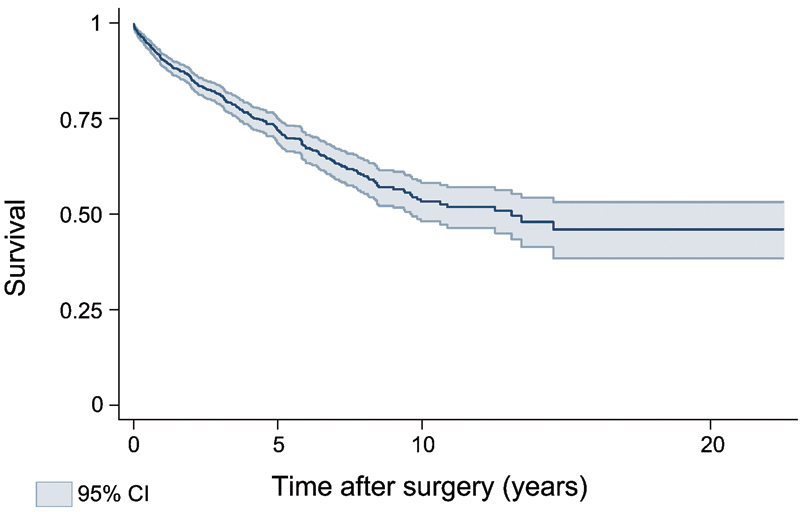Abstract
Study Type Retrospective cohort.
Introduction The treatment of rare neoplastic conditions is challenging, especially because studies providing high levels of evidence are often lacking. Such is the case with primary tumors of the spine (PTS), which have a low incidence, are pathologically heterogeneous, and have diverse treatment approaches.1 Despite these difficulties, appropriate evidence-based care of these complex patients is imperative. Failure to follow validated oncologic principles may lead to unnecessary mortality and profound morbidity.
Objective With the aim of offering patients the most appropriate treatment based on the best available evidence, a novel scientific model was developed and employed. This article outlines this model, which has not only provided significant evidence guiding treatment of this rare condition, but we believe is readily transferrable to other similarly rare conditions.
Methods A four-stage approach was employed. (1) Planning: Data from large volume centers were reviewed together with results from a feasibility questionnaire to provide insight into epidemiology, patient volumes, tumor pathology, treatment modalities, and outcomes. (2) Recruitment: Centers with sufficient volume and valid data were enrolled and provided with the necessary infrastructure. This included study coordinators and a secure, Web-based database (REDCap, Vanderbilt University, Nashville, Tennessee, United States) to capture international data from six modules comprising: demographic, clinical, diagnostic, therapeutic, local recurrence, perioperative morbidity fields, and a cross-sectional survey to update survival information. The AOSpine Knowledge Forum Tumor designed these modules and provided funding. Each center received institutional ethics approval. (3) Retrospective stage: Prospectively collected data from all recruited centers were reviewed and analyzed retrospectively. (4) Prospective stage: Following interim analysis, prospective data collection has been implemented. In addition, a PTS bio-bank network has been created to link clinical data with tumor pathology and molecular analysis.
Results It took 18 months to implement stages 1 to 3 of this model and stage 4 is ongoing. A total of 1,495 tumor cases were captured and diagnosed as one of the 18 primary spine tumor subtypes listed (Fig. 1). The most prevalent diagnosis was chordoma (n = 344, 23%). There were 674 females and 821 males with a mean age of 43 ± 19 years at the time of surgery. Surgical treatment was performed between 1981 and 2012. The survival at 5 and 10 years postsurgery was 71.9 and 53.3%, respectively, with a median survival of 13 years postsurgery (Fig. 2).
Conclusions To date, this is the largest international collection of PTS. This novel scientific model has not only aggregated a large amount of PTS data, but has also established an international collaborative network of spine oncology centers. The access to large volumes of clinical and bio-bank data will generate further research to guide and enhance the clinical management of PTS. This novel scientific model could be of similar tremendous value if applied to other rare neoplastic conditions.
Keywords: spine, primary tumor, scientific model, rare disease, collection
Fig. 1.

The diagnosis of 1,495 tumors of the spine cases captured within the AOSpine Knowledge Forum Tumor data set.
Fig. 2.

Survival following surgery.
Funding
This study was funded by AO Spine International through the AOSpine Knowledge Forum Tumor. Each center received Institute Review Board/Ethics Committee approval.
Reference
- 1.Kelley S P, Ashford R U, Rao A S, Dickson R A. Primary bone tumours of the spine: a 42-year survey from the Leeds Regional Bone Tumour Registry. Eur Spine J. 2007;16(3):405–409. doi: 10.1007/s00586-006-0188-7. [DOI] [PMC free article] [PubMed] [Google Scholar]


